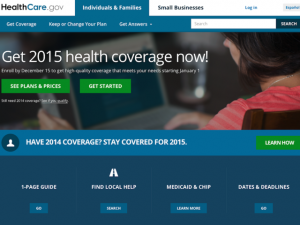Obamacare numbers likely to be below estimates
< < Go Back
by John R. Graham,
On November 15, Obamacare’s second enrollment season opened. Applicants who wanted coverage starting on January 1 had to apply by December 15. Now that the New Year is upon is, we can take three early lessons away from the first six weeks of open enrollment:
– Obamacare’s enrollment target of 9 million to 10 million for 2015 (reduced from 13 million) is still very optimistic.
– Inertia rules: It appears that two-thirds of 2014 enrollees have auto-enrolled in the same plan, although most could have saved on premiums if they had shopped around.
– On average, each new 2015 enrollee is receiving a bigger subsidy than the average 2014 enrollee. So, even though there are fewer Obamacare dependents than initially expected, the total cost to taxpayers may not go down.
On November 10, the U.S. Department of Health & Human Services (HHS) predicted 9.1 million enrollees, within an expected range of 9.0 million to 9.9 million. This was a retreat from an estimate of 13 million enrollees made by the Congressional Budget Office.
In light of reported enrollments, this prediction appears very optimistic. About 7.1 million applicants had “selected” (which includes auto-enrollment for 2014 enrollees) a plan on an Obamacare exchange by December 26. This is likely an underestimate.
About 6.4 million enrolled in the first five weeks (November 15 – December 19), an average of almost 1.3 million a week. As the December 15 deadline for January 1 coverage approached, applicants rushed the doors: 3.9 million signed up in the fifth week alone, of which 1 million applied in the last three days up to December 15 (p. 5). Nevertheless, one-fifth of those who were determined eligible for coverage in the 37 states with federally facilitated exchanges did not bother to select a plan (p. 9).
2014 enrollees who took no action were auto-enrolled by December 18. After that, enrollment dropped to a trickle.
Although detailed data is only available for the 37 states which use a federally facilitated exchange, it appears that about two-thirds of 2014 enrollees have drifted into 2015 without changing plans.
Although detailed data is only available for the 37 states which use a federally facilitated exchange, it appears that about two-thirds of 2014 enrollees have drifted into 2015 without changing plans.
The new applicants are demanding more taxpayer subsidies than the 2014 cohort.
How this will affect taxpayers’ liabilities is unclear: The number of people signing up is fewer than expected, but the proportion of them receiving subsidies is higher than expected.
More From NCPA:




